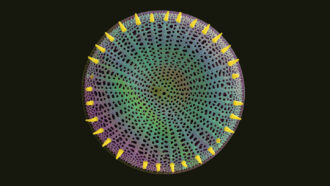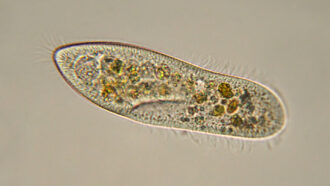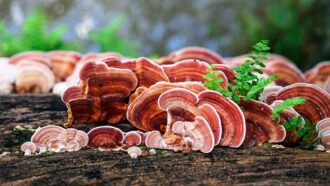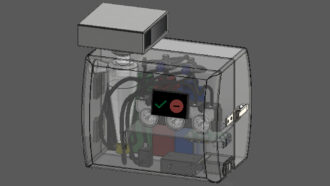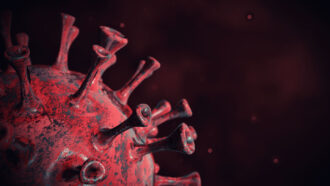The power of microbes
Bacteria that live in the gut may help define species
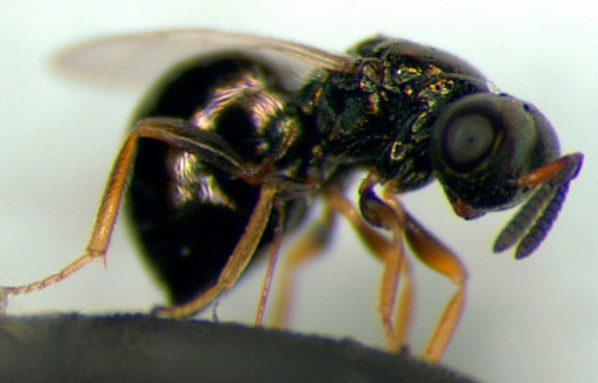
A living animal is never alone. Its body — like yours — is home to trillions of microbes, or tiny single-celled organisms. Those microbes aren’t just hitchhiking. They can play an important role in separating species, researchers now report.
That discovery comes from a study on gut microbes in jewel wasps. Seth Bordenstein, a biologist at Vanderbilt University in Nashville, Tenn, led the research. He and coworker Robert Brucker studied what happened when different species of jewel wasps produced offspring.
A species contains similar organisms that can mate and produce healthy offspring. Bordenstein reported that when two different species of jewel wasps (scientific names Nasonia giraulti and N. vitripennis) mate, they produce hybrid larvae that quickly die.
Biologists usually blame a hybrid organism’s failure to survive on the fact that its parents have different — and incompatible — genes. Genes are molecular bits of information passed from parents to offspring. They are found within nearly every cell. Genes help determine many things about an organism, from eye color to the likelihood of developing a certain disease.
But genes may not be the only reason hybrids don’t live. The wasp experiments suggest a more complex explanation. Gut microbes also appear to play an important role in a hybrid’s survival.
The researchers used drugs to kill the bacteria in the guts of hybrid-wasp larvae. This treatment saved many of the hybrids. The team also used the drugs to kill the gut bacteria in purebred larvae. Their parents came from the same species. Microbe-free hybrids lived as long as microbe-free purebreds.
In a later test, Brucker returned several types of germs from the guts of hybrids back to these wasps. The hybrids’ survival rates fell.
So without bacteria, the hybrids lived. With it, they died.
Bordenstein reported the surprising results in June at a scientific conference.
The findings shocked some of the scientists in the audience. “I would never have predicted that,” biologist Corrie Moreau told Science News. “We were blown away.” Moreau, an ant researcher at the Field Museum in Chicago, didn’t work on the wasp study.
Bordenstein says that species may evolve, or change over many generations, because both their genes and microbes change.
Researchers don’t yet know how genes and bacteria interact to kill hybrids, like the wasp larvae. They also don’t know how genes and bacteria interact when new species evolve. But Bordenstein says his data point to why it’s important to study the genes not only of an organism itself, but also of any germs that live inside the host. For people, that’s a big task. People have about 20,000 genes. Their microbes add about 8 million more!
Power Words
bacteria A large group of single-celled microorganisms, including some that cause disease.
evolution The process by which different kinds of living organisms developed and diversified from earlier forms during the history of Earth.
gene Information that is transferred from a parent to offspring and is held to determine some characteristic of the offspring.
germ Any microbe, usually a one-celled organism such as a bacterium, fungus or amoeba. Germ may also be applied to viruses. Germs are defined on the basis of their size, not on whether they affect health.
gut Colloquial term for an organism’s stomach and/or intestines. It is where food is broken down and absorbed for use by the rest of the body.
microbe Short for microorganism, it describes very tiny — typically one-celled — living organisms or viruses.
species A group of similar organisms capable of producing offspring.
larvae The immature form of an insect, especially one that differs greatly from the adult and is part of the stage between egg and adult.
